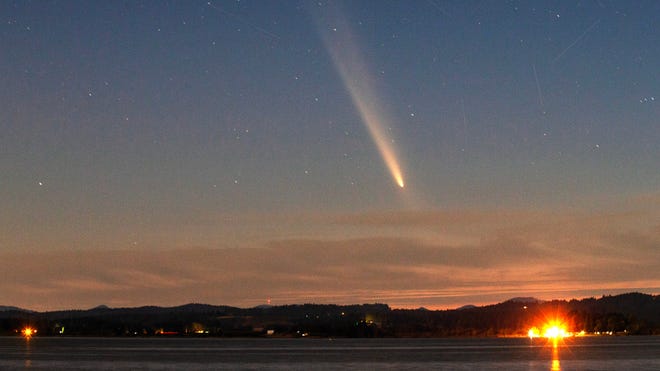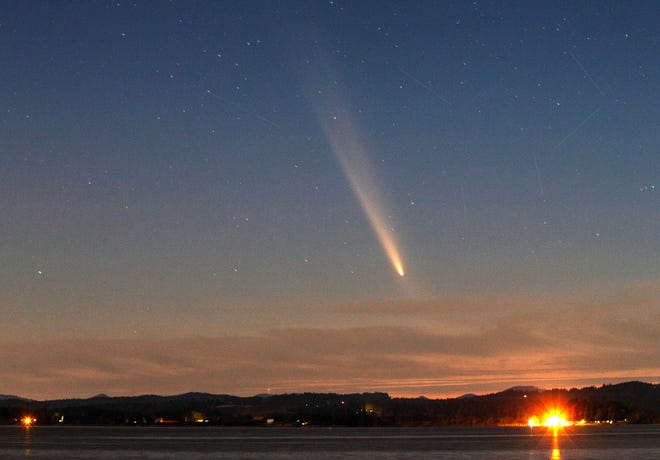
2024-10-15 13:05:04
Don’t blame Tsuchinshan-ATLAS, but ancient peoples saw comets as harbingers of bad things to come.
Some of humanity’s earliest recorded history associates the arrival of comets in the night sky with events like earthquakes, floods, and epidemics.
The word “disaster” has its roots in the Latin prefix dis, meaning evil, and the Latin word Astro, meaning “star.”
OK, we have been experiencing hurricanes and wildfires, and a nationwide election looms, but coincidences happen, right?

Take solace — the laws of physics are still true, and our latest visitor is just a two-mile-wide chunk of dust and ice doing its celestial thing, circling our sun in a highly elliptical orbit that happens to bring it by Earth every 80,000 years.
Named after the Tsuchinshan, or “Purple Mountain,” Observatory in China and the ATLAS (Asteroid Terrestrial-impact Last Alert System) telescope in South Africa, the comet was first discovered last year.
It has been slowly approaching Earth ever since. If you haven’t noticed you are forgiven. It has been very faint, and it has been sharing the sky with the much brighter sun for months.
Now is your chance, earthlings.
This week affords a once-in-a-lifetime opportunity. Stop doom-scrolling on your mobile device, get off the couch and venture out in the evening, weather permitting, for a look.
Comet Tsuchinshan-ATLAS can be seen after sunset for the next 10 days. As the sky darkens, the comet should be visible in the western sky. It will appear a little higher on the horizon each night until October 24 when it will gradually begin to fade from sight.
Find a location free of city lights, clouds, and other visual obstacles, pull up a lawn chair and enjoy the spectacle.
Contact photographer Chris Pietsch atch***********@***********rd.com, or follow him on Twitter@ChrisPietsch and Instagram@chrispietsch





